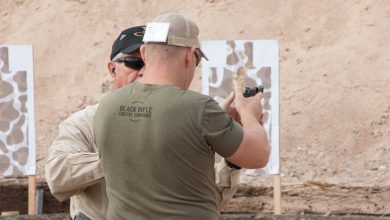Army certifies rapid anti-drone response team

Following successful field exercises simulating defense against drone incursions, the U.S. Army’s Northern Command has formed an operational team to rapidly counter drone threats to military bases within the United States.
“The validation and certification of our Counter-small UAS fly-away kit is an important step in being able to support installation commanders within the United States as they defend against drone incursions,” Gen. Gregory Guillot, North American Aerospace Defense Command and USNORTHCOM commander, said in a release.
“Moving beyond an advisory role, we now have a team with equipment that is able to rapidly deploy and provide active and passive detection capabilities and low-collateral non-kinetic and low-kinetic defeat options in one package.”
The Army certified the unit of 11 soldiers as an operational team following high-pressure field tests in Florida and North Dakota, which saw soldiers with various specialized backgrounds from USNORTHCOM and 21st Space Base Delta at Peterson Space Force Base practice defending domestic military sites using NORTHCOM’s Counter-small UAS fly-away kit.
The kit, produced by Anduril, forms an all-round web of sensors and effectors to detect, target and disable intrusive small drones. With overlapping layers of technology, the system forms a shield to detect and track drones from all directions.
The kit uses Anduril’s Wisp, an AI-infrared system with 360-degree motion sensor, plus Pulsar, an AI-enhanced electromagnetic warfare platform that can detect and deny electronic threats. Added to this is the Heimdal mobile sensor trailer that uses thermal optics and radar to seek incoming targets. The systems work together in synchrony.
The kinetic strike element of the kit is Anvil — a flying, self-guided interceptor that hunts down intrusive drones and rams into them, hurling them out of the sky. A flexible air weapon, Anvil includes a munition variant armed with high explosives.
The counter-drone fly-away kit team first tested its abilities in September during exercise Falcon Peak 25.2, which saw soldiers of the 10th Special Forces Group play the role of adversaries launching drone threats for military and interagency partners to respond to.
Tasked with practicing the defense of the 5th Bomb Wing at Minot Air Force Base in North Dakota, the fly-away kit team succeeded in stopping over 100 unmanned aerial targets over a span of several days.
Most of the operators had no previous experience with drones, Chief Warrant Officer 3 Joey Frey, C-sUAS response program manager for NORTHCOM, said in a release.
“This team of 11 far exceeded expectations of operators whose first time seeing the system was 30 days ago,” Frey said. “Their ability to adapt to an unfamiliar mission set and learn the tactics of air defenders was a breath of fresh air.”
Zita Ballinger Fletcher previously served as editor of Military History Quarterly and Vietnam magazines and as the historian of the U.S. Drug Enforcement Administration. She holds an M.A. with distinction in military history.
Read the full article here









